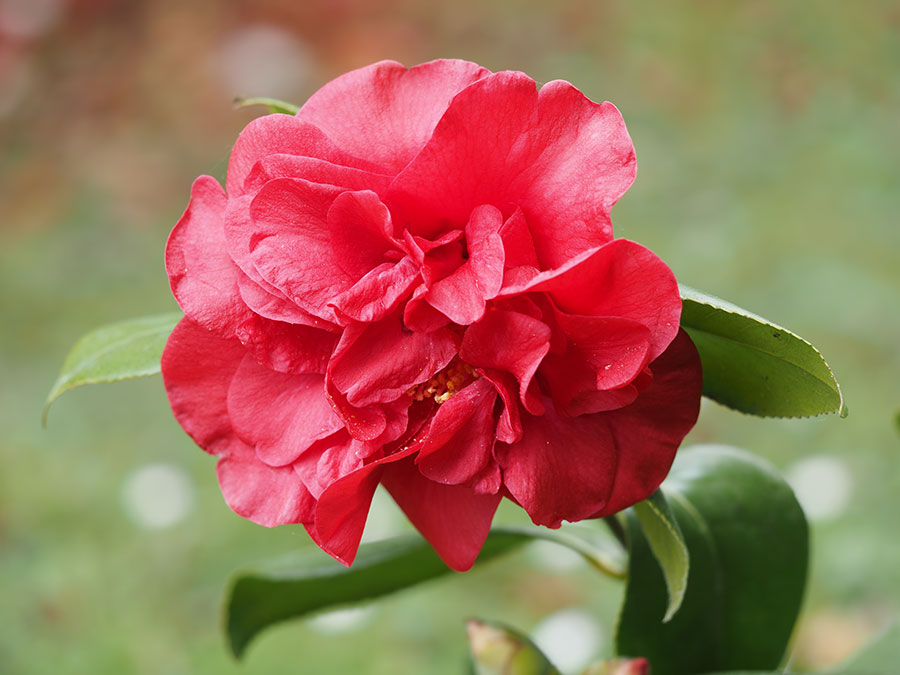The garden of camellias with a woman's name
We pay tribute to renowned women at the Soutomaior Castle.
The Deputación de Pontevedra has started an initiative that has allowed us to create a garden of camellias named after women that have played a major role in history, science, art and society.

This project began after planting the first specimen of Camellia japonica 'Maria Vinyals', a variety dedicated to the writer and pioneer of feminism in Spain who was born in the Soutomaior Castle. The data sheet of this variety is available here

C. hibrida 'Rosalia de Castro': she was a prominent figure in the Rexurdimento (revival) of Galician literature in the 19th century (1837-1885) and was the author of classic works such as Follas novas, En las orillas del Sar and Cantares Gallegos. The first publication of the latter, on May 17, is the date chosen to celebrate the Galician Literature Day. Moreover, every year the Rosalía's Day is commemorated with events to pay tribute to the writer. It takes place on February 23, which is the anniversary of her birth.
Data sheet

C. japonica 'Bella Otero': cultivar named after Agustina Carolina Otero Iglesias (1868-1965). She was born in the village of Valga, and was one of the most famous artists and courtesans of Paris during the belle époque. Many books and articles about her life have been published, and there is even a film starring Mexican actress María Félix and an Italian television series with Ángela Molina playing the role of Bella Otero.
Data sheet

C. japonica 'Dona Jane Andresen': cultivar dedicated to Joana Enriqueta Lehmann Andresen (1861-1938), who was a sculptor and a floriculturist. In 1895, she purchased the Quinta do Campo Alegre, which currently houses the Porto Botanical Garden.
Data sheet

C. hibrida 'Juana de Vega': it bears the name of the Countess of Espoz y Mina (1805-1872). This writer from A Coruña carried out an important social and cultural work. Her aim was to help children living in the rural areas of Galicia to get out of poverty through education and to support the development of these poor areas. Shortly after her death, in 1872, a large part of her belongings was donated to the Juana de Vega Foundation, which is still working today to keep her legacy alive.
Data sheet

C. japonica 'Sofia Novoa': it was named after Sofía Novoa, a pedagogue and musician born in Vigo in 1902. She wanted to introduce music to students from all education levels. She pursued excellence in all her projects and in her own life, and wanted to lead an independent and professionally rewarding life, something unusual for women in the early 20th century.
Data sheet

C. japonica 'Emilia Pardo Bazán': it was named after the Galician writer from A Coruña who was a pioneer of feminism and one of the most important literary figures of the second half of the 19th century in Spain (1851- 1921).
Despite the difficulties faced by women to gain access to university education, she was the first woman to hold a chair in Literature at the Central University of Madrid. She was also the first woman to be a member of the Madrid Athenaeum, and she became president of its Literature Department.
She was a friend of María Vinyals and shared the same ideas; in fact, she visited her at the Soutomaior Castle and the Lluria Sanatorium accompanied by her daughter Carmen.
Data sheet

C. japonica 'Jimena Fernández de la Vega': named after Dr. Jimena Fernández de la Vega (1895-1984) who was, together with her twin sister Elisa, the first woman to hold a Bachelor's Degree in Medicine from the University of Santiago de Compostela, and obtained an Special Award for her degree in 1919. She stood out for her work in the medicine field, and was also a researcher in genetics applied to health care; in fact, she is considered a pioneer of Medical Genetics in Spain and has recently been chosen as Scientist of the Year 2021 by the Galician Royal Academy of Sciences

Camellia japonica ‘María Casares' named in homage to the artist popularly known as ‘the Republican exiled artist’, she was considered one of the greatest figures of 20th-century French theatre. In her book Résidente privilégiée, she recounts her childhood in Galicia, her adolescence in Madrid, and her exile in France after the outbreak of the Spanish Civil War. She died childless and donated her fortune to the French Republic to create a theatre school.




 TICKETS
TICKETS


